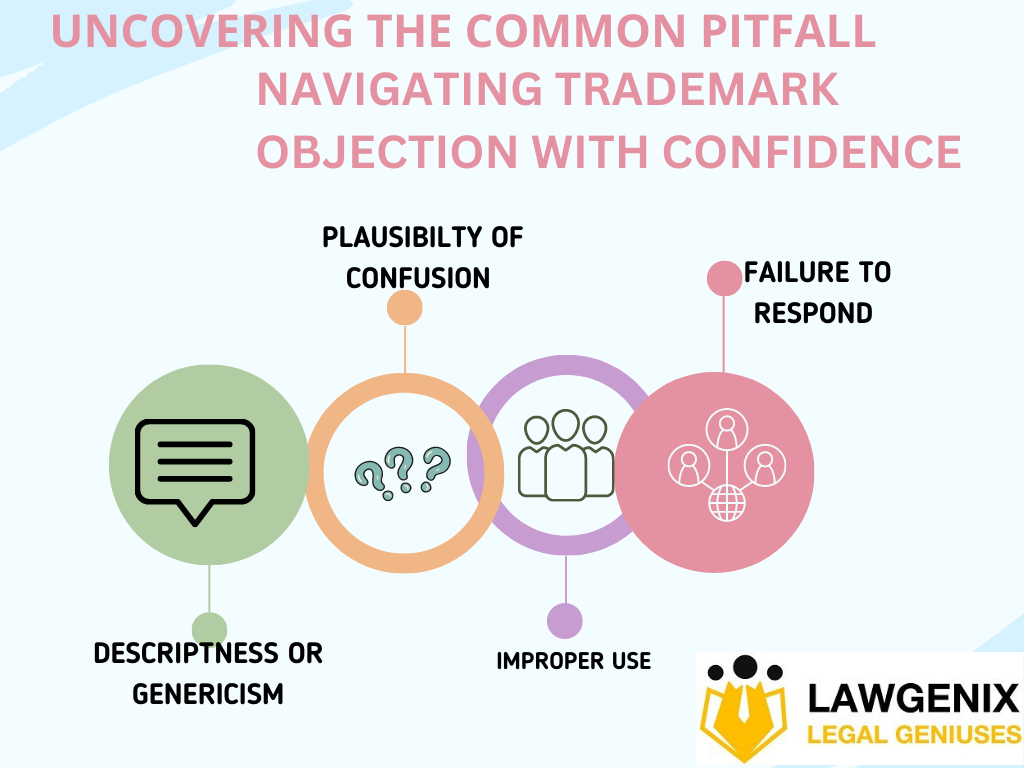Trademark registration is an essential step to protect the brand name. However, the trademark application process can be complicated and full of pitfalls, especially when it comes to trademark objections.
A trademark objection occurs when an examiner from the trademark office reviews the application and identifies potential issues with the trademark. The common pitfalls of trademark objections and possible remedies on how to navigate them with confidence.
Descriptiveness or genericism
One of the most common pitfalls in trademark registration is the descriptiveness or genericism of a proposed mark. A trademark that is too descriptive or generic may not be eligible for registration. For example, one cannot register the trademark “Apple” for a new line of computers because the word is too generic and commonly used in the industry. Similarly, a trademark like “Hot Coffee” for a coffee shop would be considered too descriptive.
To avoid this pitfall, choose a mark that is unique and distinctive, and not directly related to the goods or services you offer. Conduct a thorough trademark search to ensure that your proposed mark is not already in use or similar to an existing trademark. Consider consulting with a trademark attorney to help you choose a strong and protectable mark.
Plausibility of confusion
Another common pitfall is the likelihood of confusion between your proposed mark and an existing mark. The trademark examiner will review your application and compare it to existing trademarks to determine if there is a probability of confusion. If your proposed mark is too similar to an existing mark in the same industry, your application may be rejected.
To avoid this pitfall, conduct a comprehensive trademark search to identify any existing marks that may conflict with your proposed mark. If you find any conflicts, consider modifying your mark or choosing a new one altogether. You may also want to consult with a trademark attorney to evaluate the likelihood of confusion and help you navigate the objections process.
Improper use or inappropriate specimen
A common reason for trademark objections is the improper use or specimen. The trademark examiner will review your application to ensure that you are using the mark properly and providing a proper specimen that accurately represents the mark in use. For example, if you are applying for a trademark for a logo, but your specimen only shows the word mark, your application may be rejected.
To avoid this pitfall, make sure that you are using the mark properly and providing a proper specimen that accurately represents the mark in use. Review the trademark office’s guidelines for proper use and specimens, and consider consulting with a trademark attorney to ensure that your application meets all requirements.
Failure to respond
Finally, a common pitfall is failing to respond to trademark objections. If the trademark examiner identifies issues with your application and sends you an objection letter, it is important to respond promptly and thoroughly. If you fail to respond, your application may be abandoned.
To avoid this pitfall, carefully review the objection letter and provide a detailed response that addresses each issue raised by the trademark examiner. Consider consulting with a trademark attorney to help you craft a strong response that addresses all concerns and increases your chances of success.
In conclusion, navigating trademark objections can be a complicated process, but with careful preparation and attention to detail, one can navigate these common pitfalls with confidence. Choose a strong and distinctive mark, conduct a comprehensive trademark search, ensure proper use and specimens, and respond promptly and thoroughly to objections. With these steps, you can increase your chances of successfully registering your trademark and protecting your brand. It will be a great help if one can consult a trademark attorney before applying for trademark registration to avoid any discrepancy.

